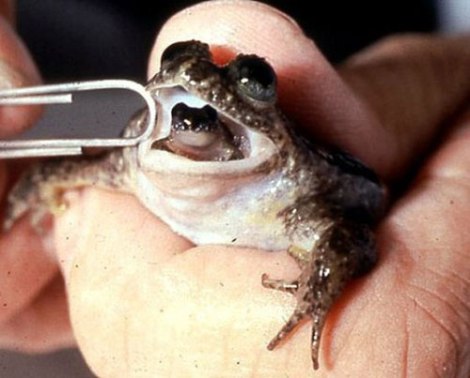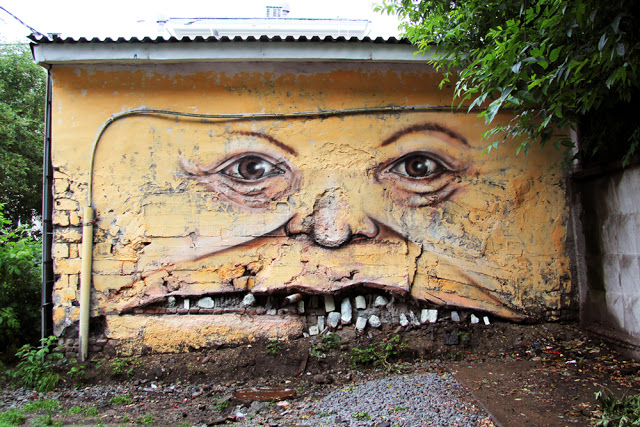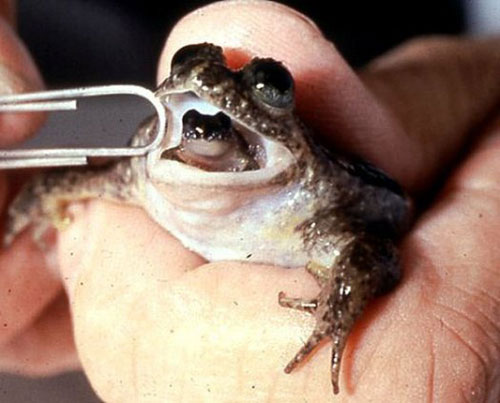
Australian Government Department of the Environment, Water, Heritage and the ArtsI think you have a frog in your throat.
Preserved DNA is kind of like preserved lemons. It’s DNA that’s been sitting around for a while getting ready to do something big. (What? Lemons have dreams.) For example, take the DNA of this amazing frog, which gives birth out of its mouth. That preserved DNA sat around for 40 years before scientists at the University of Newcastle in Australia used cloning technology to bring the weird species, extinct since the ’80s, back to life.
I’m making it all sound so simple. Here’s more:
A process called somatic cell nuclear transfer (SCNT) was applied to a batch of eggs that had been kept in a freezer over the last 40 years. Biologists deactivated the eggs from the distantly related great-barred frog, and swapped the nuclei with that of the gastric-brooding frog. Some of the resulting eggs began to spontaneously divide, growing into the embryo stage. While none of the embryos survived past a few days, genetic tests confirm that the little balls of life were in fact full of the genetic material from the extinct species.
OK, so there’s no actual frog YET. But they are optimistic that there will be an actual frog, which yes, seriously incubates eggs in its stomach and gives birth out of its mouth.
This is all both exciting and controversial. Yes, it’s great, especially given our propensity for killing them off unnaturally, that species can be revived from having been extinct. But it’s hard to deny that bringing species back to life has an unfortunate playing-God angle. What will we bring back next? Tyrannosaurus Rex? Aspic? The Andrews Sisters? Oh science! How you baffle us with your conundrums!




